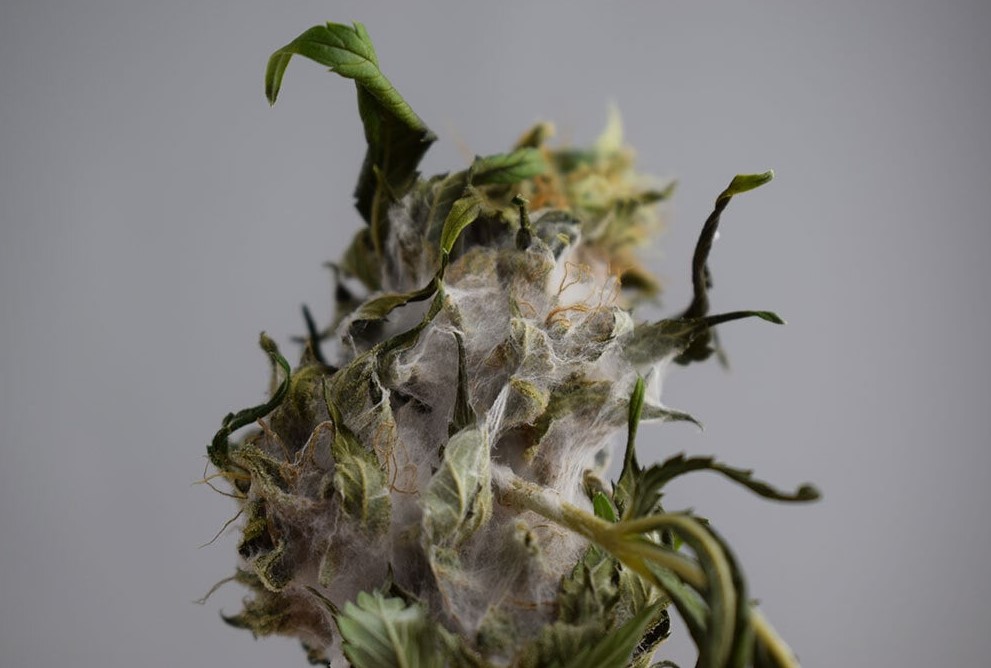Non classé
Moldy Weed
Any herbe farmer’s worst nightmare is having their crop become moldy. It can happen to anyone at any time, and quickly ruin an entire harvest. Obviously, no grower would ever want to sell moldy weed, but even the perfectly dried buds can develop a funky fungus.
Can you get moldy weed, and what happens if you happen to smoke it? Keep reading below to find out how to identify it as well as some tips on how to avoid smoking it.
How Does Weed Get Moldy
All mold needs to grow is moisture and lack of airflow. By producing mycelium, which then forms airborne spores, mold can attach itself easily to any damp surface. From there, the Mold begins to populate and continue its growth cycle at an alarming rate for some types. The main reasons why mold grows in a grow site are moist conditions, inadequate air circulation, high humidity, and incorrect storage. If the climate is humid enough, mold can form on a live plant quite rapidly but it can also be seen on trimmed buds.

What Does Moldy Weed Look Like
Many people have never considered the possibility of moldy weed and may not know what it looks like. If you’re unfamiliar with cannabis, it can be tricky to spot at first. However, high-quality buds usually glisten with trichomes – the shiny crystals on cannabis plants that are responsible for the souche‘s specific aroma. Mold is not lustrous like glitter; instead, it takes on a variation of appearance depending on the type of mold. There are three primary types of mold that affect cannabis growth.
- Powdery mildew: Powdery mildew appears as grayish-white powder on the leaves and flowers of plants. It has a similar consistency to flour.
- Botrytis (bud rot): Weed with bud rot starts on the inside of the bud and may be gray or brown. When you try to squeeze these buds, they might crumble in your fingers.
- Sooty mold: Sooty mold appears as small, dark blackish patches on the fan leaves and looks like soot sprinkled across the leaves of the weed. Although it is fungal, sooty mold is a sign of a serious bug infestation.
How to Tell if Weed Is Moldy
If you see any white powder, black spots, or dark grayish fuzzy chunks, this is most likely mold. In addition to visual cues, there are a few other ways to determine if your weed has gone bad. Moldy weed usually smells musty and damp – similar to wet hay or mildewing towels.
If you are not immediately alerted to the mold by look or by smell, you may be able to spot it by taste.
What Does Moldy Weed Taste Like
No one wants to smoke moldy weed, but if you come across a unfamiliar strain that doesn’t taste right, it might be mold. Mold leaves behind a unique flavor that is unlike anything else in cannabis. The best way to avoid this problem is to only purchase clean and organic weed from reliable dispensaries.
The taste of moldy weed is quite simple to explain: it tastes like mold. For example, the blue veins in bleu cheese are actually mold, but in this scenario it is safe to consume. The musty flavor is distinct and easily recognizable.
Another way to identify moldy weed is by its smell, which can resemble human sweat or urine. This aroma might come out when the bud is burned.

What Happens if You Smoke Moldy Weed
Questions about the safety of consuming moldy weed are not unfounded. Inhaling spores from cannabis plants could lead to serious health problems down the road.
Mycotoxins are poisonous chemicals produced by mold spores. When someone breathes in these toxins, it can cause serious harm–and even death–to immunocompromised persons. Mycotoxins typically target the sinuses and lungs, causing problematic inflammation. But smoking mold is particularly dangerous and can result in coughing, wheezing, rhinitis, sneezing and other pulmonary issues.
Ingesting moldy weed over an extended period of time can lead to the formation of scar tissue in the lungs, which then results in pulmonary fibrosis. Therefore, you shouldn’t smoke moldy weed.
Best Practices to Avoid Moldy Weed
You can best avoid moldy weed by proper storage in airtight, resealable glass jars kept in a cool, dark place. Do not expose the jars to temperatures higher than 77 degrees Fahrenheit.
It is rumored that you should place jars of herbs in the refrigerator or freezer, but this is not necessary. If anything, it could do more harm than good by increasing mold exposure through moisture. Keep your herbs out of direct sunlight and opt for a drawer or dark cabinet instead; humidity levels ideal for storing dried herbs are between 59-63%. If you live somewhere with high humidity, using a humidity pack will help keep your herb dry – just remember to change it out every couple months.
Keep a small magnifying glass with you to always be able to inspect your weed for mold before smoking it.


